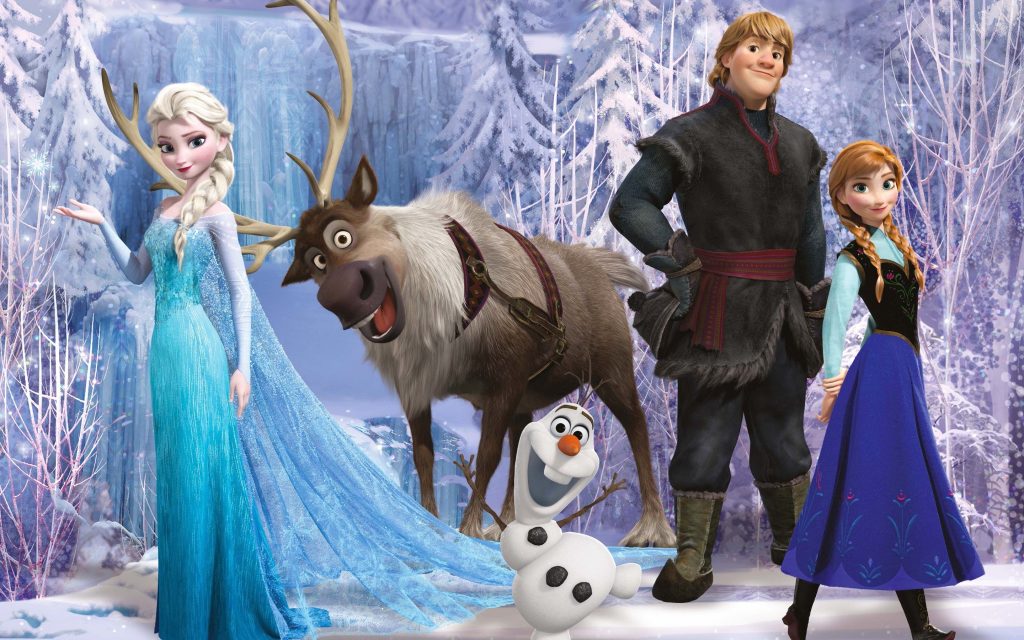Frozen: Decoding the Success of a Global Animated Phenomenon
terehiatheatre // animation 2025-05-06

As the 53rd animated feature produced by Walt Disney Animation Studios, Frozen (2013) has become a worldwide cultural phenomenon. This article explores the key factors behind the success of this international animated blockbuster and reveals why it broke numerous records and continues to captivate audiences globally.
1. A Global Box Office Sensation and Cultural Impact
Frozen achieved remarkable commercial success:
-
Grossed over $1.28 billion worldwide, making it one of the highest-grossing animated films of all time
-
Won two Academy Awards (Best Animated Feature and Best Original Song)
-
The soundtrack topped the US Billboard 200 for 11 weeks, a record for an animated film
-
“Let It Go” became a global anthem, translated into 41 languages
Beyond financial success, the film deeply influenced pop culture, becoming one of the most iconic animated works of the 2010s.
2. Innovative Storytelling and Character Development
Frozen broke away from traditional Disney princess tropes:
Groundbreaking Characters
-
Elsa became Disney’s first princess with supernatural powers
-
The sisterly bond between Anna and Elsa replaced the classic “prince-saves-princess” narrative
-
Prince Hans subverted expectations as the franchise’s first villainous prince
Narrative Innovations
-
The “act of true love” redefined love beyond romantic clichés
-
A dual protagonist structure balanced character arcs
-
Focused on self-acceptance and emotional growth rather than a traditional adventure plot
3. The Perfect Fusion of Music and Technology
Frozen set new standards in artistic and technical execution:
Musical Achievements
-
Songs by Kristen Anderson-Lopez and Robert Lopez blended artistry with pop appeal
-
“Let It Go” became a cultural phenomenon, with over 2 billion YouTube views across various versions
-
Music seamlessly advanced the plot, enhancing emotional depth
Technological Breakthroughs
-
Disney’s proprietary “snow simulation” tech created hyper-realistic snowscapes
-
Elsa’s hair used the new “Tonic” system, with 400,000+ CG strands
-
Ice and snow effects set a new benchmark, earning technical accolades
4. Globalization and Localization Strategies
Disney implemented a brilliant worldwide marketing strategy:
Multilingual Adaptations
-
“Let It Go” was recorded in 25 languages
-
Featured local celebrity singers in key markets
-
The Mandarin version (随它吧), sung by Yao Beina, became a hit in China
Cultural Customization
-
Emphasized self-restraint vs. liberation themes in Japan
-
Highlighted Nordic mythology connections in Scandinavian regions
-
Tailored promotional campaigns for different markets
5. Franchise Expansion and Lasting Legacy
Frozen spawned a vast commercial ecosystem:
Merchandising Success
-
Elsa & Anna dolls ranked among the world’s top-selling toys for years
-
Disney Parks introduced Frozen-themed attractions
-
The Broadway musical adaptation earned Tony Award nominations
Sequels and Expanded Universe
-
Frozen II (2019) grossed $1.45 billion globally
-
Disney+ released multiple shorts and specials
-
A third film and potential live-action remake are in development
6. Social Relevance and Timeless Themes
Frozen resonated with 21st-century societal shifts:
Female Empowerment
-
Elsa’s journey symbolized self-liberation and independence
-
Anna’s bravery and intelligence defied princess stereotypes
-
Sisterhood presented a new model for female relationships
Psychological Depth
-
Elsa’s fear and repression struck a universal chord
-
Themes of hiding vs. embracing one’s true self reflected modern struggles
-
Psychologists used the film to discuss emotional management and identity
Conclusion: Enduring Magic and Lessons Learned
Frozen became a global phenomenon by masterfully blending technology, artistry, and zeitgeist. It redefined Disney animation and proved that well-crafted storytelling transcends cultural barriers. As the Frozen universe expands, its influence will endure for years, offering valuable insights for the entertainment industry.
By analyzing Frozen’s success, creators can learn how to merge artistic vision, commercial appeal, and social relevance—crafting stories that resonate across the world.
